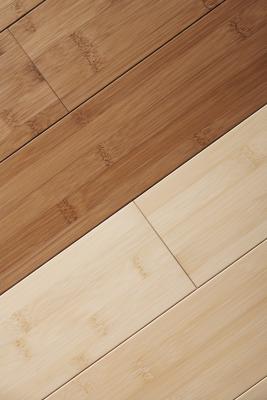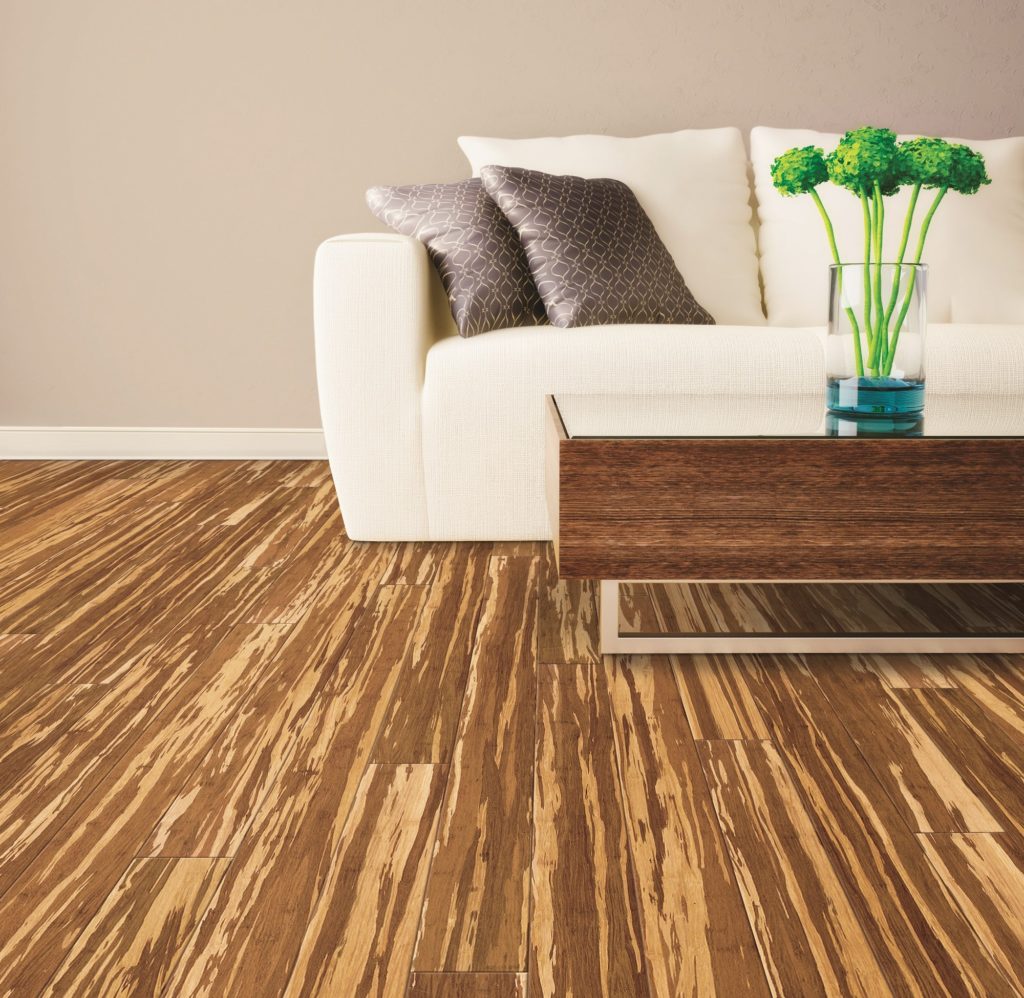Everybody seems to have their own assumption when it comes to How to Clean Bamboo Floors.

Bamboo flooring is renowned for numerous house owners because of its benefits. It is long lasting and offered in different shades, from light blond to rich espresso. Additionally, it can be based on tarnishing to match any kind of décor. It has actually come to be the major choiced flooring for company and also homeowners whenever there is demand for sustainability.
Nonetheless, bamboo much like timber, is vulnerable to damages as well as splitting when humidity degrees fluctuate.
Are you believing regarding bamboo flooring for your house? We will likewise go over the different types of bamboo flooring available on the market.
Types of Bamboo Flooring
There are three standard alternatives: strand-woven, vertical, as well as horizontal. Homeowners can pick which sort of bamboo flooring to get based on their characteristics. Also, the customer's desired visual influences the selected Bamboo flooring type.
Engineered Bamboo Flooring
Both solid as well as crafted bamboo flooring options are readily available. Once the bamboo wood fits, it isn't very easy to distinguish between them.
Their distinctions are due to their production. For example, engineered bamboo timber has a slim plywood support.
But, whether engineered or solid, bamboo flooring is sturdy, resilient, as well as appealing.
Engineered bamboo flooring utilizes the drifting wood flooring over a slim foam base. They may likewise be in the form of vast slabs. They are available in widths up to 19 centimeters.
Strong - Horizontal Bamboo Flooring
You will observe that this type is virtually the like upright bamboo flooring. Yet it has a slight variant. Straight bamboo is among the most popular types of bamboo flooring.
It is made by drying massive strips of bamboo, cutting these larger pieces right into thinner strips, and after that gluing them to develop planks. The boards will certainly after that be subject to stress as well as heat to ensure they are well attached.
Natural bamboo has a lighter color. While carbonized bamboo will be less hard than regular bamboo, if you need a darker shade, it might do you excellent.
Strand Woven Bamboo Flooring
Shredding the bamboo to draw out the fibers is just one of the extra drawing action in creating strand-woven bamboo floorings.
The bamboo fiber is often combined with a sticky after it's made to a pulp. The material is after that weaved and pressed together under wonderful warm, as the name suggests.
After making upright as well as straight bamboo, the strips serve to develop strand woven bamboo. The eco-conscious buyer may locate this function appealing. The factor is that it makes sure that the whole bamboo stalk produces really little waste.
Solid - Vertical Bamboo Flooring
Slim strips of completely dry bamboo wood glued up and down and also pressed utilizing high warmth as well as stress create this kind of bamboo flooring.
The thinnest side of the bamboo slabs will certainly be in a vertical type. After that, a company bonding, pushing, and lamination will comply with. Because of their technique of joining, the bamboo strips feature a narrow grain pattern.
The advantage concerning this sort of bamboo flooring is that it is very affordable as well as resilient. Likewise, it provides a stylish and classy floor coating. Yet it is not commonly offered.
Attributes As Well As What to Remember When Picking Bamboo Flooring
With a multi-layered finish, bamboo flooring will certainly be pretty long lasting. Yet keep in mind that future touch-ups might require an extra proficient flooring professional.
Also, applying your finish will make matching repair work simpler when set up in your house. But the coating will not last as long as manufacturing facility finishes.
In addition to that, right here are some amazing features of bamboo flooring.
Eco-Conscious
This flooring comes from an all-natural plant called the bamboo plant. So when compared to other tree types made use of to make wood flooring, bamboo grows more as well as quicker.
Low-cost Maintenance
You can keep bamboo flooring in good condition by cleansing as well as damp mopping. Despite being more prone to scrapes, bamboo flooring is very simple to keep.
You might get bamboo floors that are as good as brand-new by sanding them down and using a fresh layer of paint.
Resilient
Bamboo flooring is not produced equal. There are many kinds of bamboo, as well as the various methods made use of to transform it into slabs affect its toughness.
Bamboo, like hardwood flooring, can come to be susceptible to use and tear over time. Scratching, fracturing, and also other wear and also tear may happen. You can also sand some bamboo to resemble wood, but not all.
Bottom Line
It's easy to recognize why bamboo flooring has ended up being more popular nowadays. For nearly any house, bamboo supplies many strong and audio solutions for the setting. Consequently, bamboo floor may be the best option for updating your flooring.
We will also talk about the various types of bamboo flooring offered on the market. House owners can choose which kind of bamboo flooring to buy based on their characteristics. Horizontal bamboo is one of the most prominent kinds of bamboo flooring.
While carbonized bamboo will certainly be less hard than regular bamboo, if you require a darker shade, it might do you excellent. After making straight as well as upright bamboo, the strips offer to develop strand woven bamboo.
Bamboo Flooring
Manufacture of Bamboo Flooring
Stranded bamboo is made by shredding the bamboo stalks into small strands, which are compressed into sheets using heat and resin binders, then cut into planks to use as building materials. This form of flooring is available both as tongue-and-groove planks that are nailed down, as well as planks that float over the underlayment. This is a premium form of bamboo flooring, available in many colors.
Horizontal bamboo flooring is manufactured by cutting the strands into thin strips which are then glued together to form planks. This type of flooring has a "grain," since the long stalk fibers are visible in the flooring. This type of bamboo is not as hard or durable as stranded bamboo, but it can have a very striking appearance. It, too, is available both in nail-down planks and as floating floor planks.
Engineered bamboo flooring is made by bonding a thin layer of bamboo onto a plywood or MDF core. This flooring is comparable to engineered hardwood and is installed in the same way—usually with click-lock planks that float over a foam underlayment. It is the least expensive (and least durable) form of bamboo flooring, and it cannot be refinished.
Unless it is stained, most bamboo flooring has a natural blonde or amber color that resembles unfinished maple or birch, but darker tones are available through a process called carbonizing, which entails subjecting the planks to high temperatures. While the color can be very attractive, carbonized bamboo is softer than uncarbonized forms, and is more susceptible to scratching.
Eco-Friendliness
Environmentally conscious consumers are often drawn to bamboo as a wholly renewable resource. Unlike the hardwood lumber industry, where trees can take decades to mature, bamboo stalks grow so fast that there is little environmental liability to the harvest practices. Moreover, bamboo stalks that are cut simply continue to grow and replenish themselves so that they can be harvested.
But the manufacturing process creates other environmental concerns. Bamboo floor planks are manufactured by slicing or shredding the stalks of bamboo grass plants and then compressing the pulp back together using heat, pressure, and a resin-based adhesive identical to those used in many other flooring products. This adhesive often contains urea-formaldehyde that can outgas into the air.1
The level of adhesive used and the amount of toxins emitted will vary, depending on how the bamboo planks are manufactured. Cheaper products may contain more formaldehyde, while more expensive products may use alternative materials in the resins. The amount of formaldehyde used in bamboo flooring is similar to that found in engineered hardwood flooring or MDF sheathing, and it tends to be a problem only for sensitive individuals.2 But if this concerns you, look for bamboo products labeled as formaldehyde-free.
Bamboo Flooring Cost
This material is priced at about the same level as most hardwood floors. You can find bamboo flooring products ranging from about $2 to $8 per square foot, with a national average of $3.84 per square foot. Installation costs for bamboo flooring are much the same as for hardwood flooring. On average, figure on adding about $4 per square foot for installation labor in addition to the cost of materials. You should be able to get a good-quality bamboo installed for less than $10 per square foot, including materials and labor.
https://www.thespruce.com/benefits-and-drawbacks-of-bamboo-floors-1314694

As a reader about Bamboo Flooring, I think sharing that piece of content was necessary. Those who liked our blog post kindly don't forget to share it. I praise you for your time. Kindly come by our site back soon.
Comments on “Everything you Need to Know about Bamboo Flooring”